Men Dancing
Saturday, April 28, 2007
 Last night Rebecca and I attended the Arts Umbrella Dance Company Season Finale at the Vancouver Playhouse Theatre. Because most people don't seem to know we were able to sit front row middle which is how we like it. From there we could notice all the details and hear the dancer's breathing. Hearing them breathe is part of the thrill of dance. Both Rebecca and I know most of the dancers (we have observed them for the last four years) of the Senior Company and the Apprentice (sort of like the grade 11s). We both agreed and really liked Emily Molnar's (seen in top photo with dancer Alex Burton and Arts Umbrella's Dancer Director Arty Gordon) Opus featuring the Senior Dance Company and the music of Philip Glass. It was amazing to watch the dancers leap back and forth, specially Connor Gnam seen in the middle photo with Boys Only and Ballet BC dancer Edmond Kilpatrick giving him a noogie). 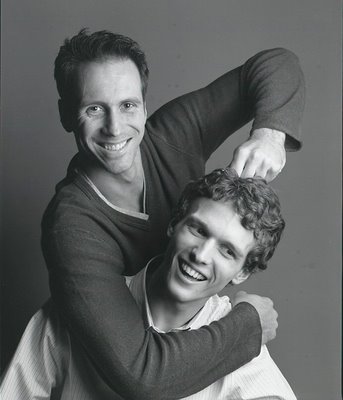 But we both agreed that we liked best the performances of the Apprentices because in all but one dance number it featured the five boys (how could the one Connor in the Seniors compete wiuth the five fabulous boys?). The boys are seen here with the flexible and graceful Nina Davies clockwise, Michel Issa Rubio, Jeremiah Kennedy, Jed Difhuis and Scott Fowler. 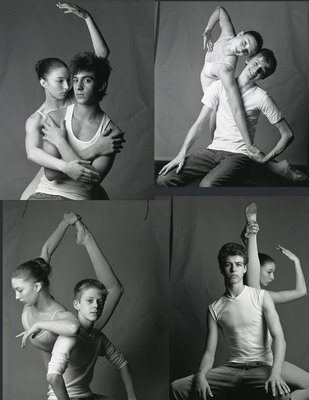 But Rebecca and I disagreed on which boys' number we liked best. Rebecca (would she be more romantic than her grandfather?) liked the ballroom dancing parts of Ballet BC's strangely named Lhaugs and Glieggs (with music by Gershwin) while I liked (loved) Roberto Campanella's (ProArteDanza, Toronto) Unforseen which featured the Apprentices with the five boys and a stellar performance by Alex Burton and Nina Davies. Who would have ever guessed that this old man, with so many beautiful girls dancing, would ever see a performance through the eyes of a little girl? Those boys were really good! And through it all I could see why Rebecca has a fondness for Scott Fowler. He was a dazzling Puck-like performer who at 13 could fit into a professional dance company and still be noticed.
Mstislav Rostropovich - Slava- Glory No More
Friday, April 27, 2007
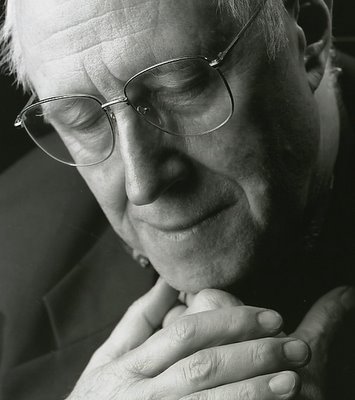
Mstislav Rostropovich died today. His nickname, Slava means glory.
To this day I can remember being kissed by my father. I can even conjure his smell. It was a combination of a long forgotten aftershave of the 50s, the Player's Navy Cut tobacco he smoked and the Old Smuggler's whisky he drank. I don't allow too many men to kiss me or do I kiss them. But here are two men who caught me off guard. One twice and the other four times. And I will never forget.
When I photographed Russian poet Yevgeny Yevtushenko (below) we found out we shared a language. I spoke my Argentine Spanish and he a fluent Cuban. We hit it off and he liked his pictures so much he kissed me, Russian style on each cheek in combination with a bear hug that almost collapsed my rib cage.
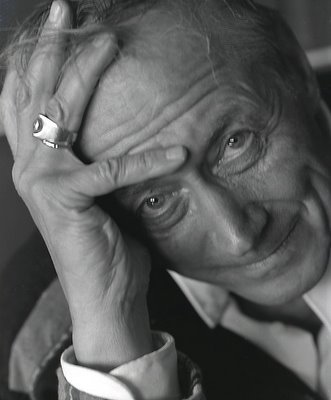
But it was Mstislav Rostropovich, above, left (called the Human Cello by Yevtushenko in his novel Don't Die Before You're Dead) who really surprised me. After a concert at the Orpheum I went to his dressing room to give him some of the photos I had taken of him. In the presence of many people he called me, "Maestro," and then proceded to kiss me twice and then again!
From "Goodbye Our Red Flag"
.. . . I didn't take the Tsar's Winter Palace.
I didn't storm Hitler's Reichstag.
I am not what you call a "Commie."
But I caress the Red Flag
and cry.
Yevgeny Yevtushenko
Yevtushenko
Adrian du Plessis - Investigator
Thursday, April 26, 2007
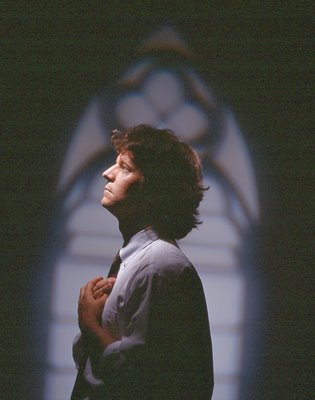
Adrian why hast thou forsaken us?
Some 28 years ago at a Vancouver punk concert (of all places, Carnegie Centre on Main and Hastings) I met a nerdy young man (with glasses, natch) who said he was the manager of one of the bands playing that evening. His band were The Metros and his name was Adrian du Plessis. With him was a woman almost 6 ft tall in black, wearing chains and leather. She was gorgeous. "And this is my girlfriend," he said to me.
From rock 'n roll he switched to what he always called white collar crime. Behind the scenes he investigated our then notorious stock exchange. Many believe he almost made it go down in flames. Then he became less behind the scenes and started writing articles for magazines where the editors had to consult in detail with lawyers to avoid lawsuits. As far as I know du Plessis only wrote the truth and it was always a truth he had painstakingly researched over a long period of time.
I made it a habit to call him up before I had to photograph a businessman for a magazine or the Globe & Mail or the Financial Post. While I never revealed to my subjects what I knew about them it helped me in being objective with my photography. I enclose here the first page of a long article du Plessis sent me a week before I photographed Robert Friedland.
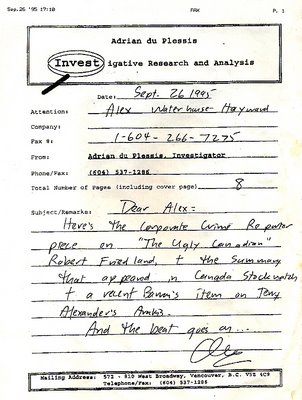
Whenever I ran into him (he cycled everywhere) we always chatted and I never failed to mention that I found it incredible he had not been bumped off or that I had yet to read a Vancouver Sun headline that du Plessis had been found floating face down in Burrard Inlet.
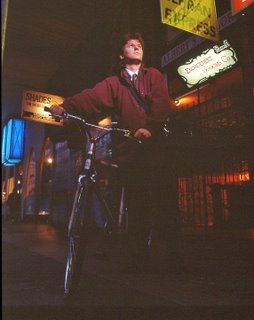
Part of du Plessis' talent came from an incredible photographic memory. A man's photo would appear on the front page of the Sun with an article on how he had been caught red-handed in a bank scandal. Five years later (the limit of Vancouver's long time memory for facts such as these) the same man would be on the business page promoting a Veracruz sunken gold venture. Only du Plessis remembered.
But there is another man whose memory may be as good, and like du Plessis it would be next to impossible to buy. This is the Vancouver Sun's investigative business reporter, David Baines (below). For many years in those terrible times of our notorious stock exchange (the 80s and early 90s) Baines wrote damning articles on the shenanigans that passed for routine business in our city. Many of those articles were fueled by du Plessis' research. And I distinctly remember that several times security was provided for Baines as he did receive death threats.
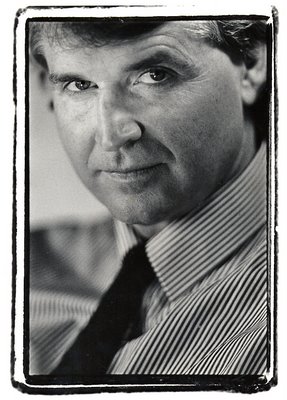
As far as I know du Plessis never bought a car and never made much money with his writing. He now lives on Saltspring Island and manages Allison Crowe.
I believe that had the December 28, 2003 BC Legislature raid in Victoria been investigated by a du Plessis/Baines team (someone would have gently pushed them from business to politics) we would not be where we are now. I only wonder how du Plessis would modify his often used term white collar crime for incidents such as these.
----------------------------------------------------------------
Addendum
The bicycle pictured in the second shot on your blog
page of today was stolen when, exhausted from all
night investigative work, I failed to lock it up outside
my Commercial Drive apartment one morning. It
was a good ride.
What I'm doing these days is pretty much the same
search for truth, in different form. Like Art
Bergmann, like Johnny Thunders, Allison makes
music from the heart. In today's music scene that's
as rare a flower as one can find.
Wishing you and your loved ones the best of this
season, and all to be. Thank you.
Sláinte mhaith, Adrian
David Radler - John Cruickshank & Brian Evans Sings O Canada
Wednesday, April 25, 2007
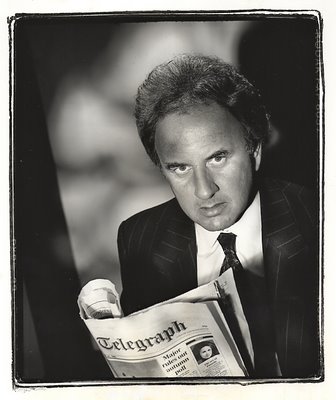
I have never understood dishonesty. It was my grandmother who used to tell me, "Piensa mal y acertarás." (Think the worst and you will be right.) She was very Catholic and was a firm believer in the concept of original sin and how we humans had a propensity for evil. Only grace through the Catholic Sacraments could save us from ourselves. I chose to disagree with her (not openly) and I always expected the best of people. When they did wrong it was always a surprise to me but I tried not to let it bother me.
While in the Argentine Navy I understood the corrupting influence of power and ambition. We used to joke that the next promotion for a four-star general or admiral President. Most of the ills of my country came about because of power and ambition.
I was once robbed in a Mexican bus and I was powerless because I had my two-year-old daughter in my arm. It happened a few days before Christmas. While delivering our Christmas presents on another year someone broke into our VW and stole the presents that had yet to be delivered. But somehow Rosemary and I never remained bitter for long.
The first and last time that I was ever treated somewhat hdishonestly by anybody was recently in 1997. I had photographed Sinatraish crooner Brian Evans (Michael Bublé was mostly unknown then) for Vancouver Magazine.
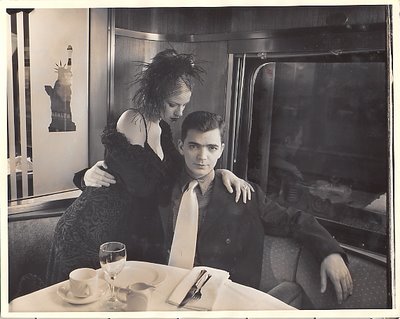
I had picked the New York rail car of BC Rail as a location and Ann Murray, the lovely daughter of a friend of mine had been thrilled to pose with Evans. As he posed for me Evans kept singing O Canada. He was to sing our anthem that evening at a BC Lions Game. I was charmed my his romantic patriotism even though he had been born in Massachusetts. A few weeks later he asked me if he could use the picture for his CD cover. We arrived at a fee and I billed him. I was never paid.
All this brings me to my photographic relationship with David Radler. I first photographed him for an early 80s article by Valerie Gibson for Vancouver Magazine about all the up and coming powerful people of Vancouver.
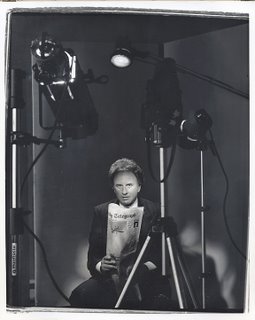
I photographed him for magazines three more times and then Radler hired me to take pictures for an annual report. My dealings with him were always pleasant and cordial. We once spoke about Malcolm Parry. Of Parry he told me, "I really like his gossip column and if it were up to me I would make him write it every day." He was obviously a fan. We chatted about other things but when I would ask about his family he always told me that he guarded their privacy and would never allow a photographer in his home. Radler was extremely proud of his Cadillac. He asked me to photograph him with it for one of the shots for his annual report.
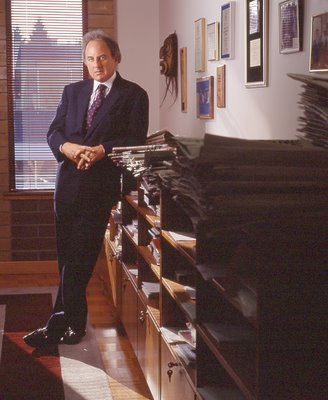
The colour photograph of him standing in his office I took in 1994 for an article that John Lekich wrote for the waning business magazine Equity. I was present for the interview and it was funny how Lekich and Radler talked about their love for baseball.
Radler was a man who loved baseball and as boy had a paper route. That did not prepare me for what is currently happening with Radler and Lord Black. He has bargained with the prosecution and will serve less time in jail.
I never saw this in the man I photographed so many times. He even posed for me in the b+w photos for Business in Vancouver which certainly don't show him in the best light. Perhaps I never gave it a thought that they reveal him as a very powerful man and that once you have a few million dollars only power can make more money any sweeter.
In 1995 John Cruickshank became Editor-in-Chief of the Vancouver Sun. I immediately saw sweeping and positives changes in our city paper. Cruickshank hired David Beers who created in Mix the best Saturday Magazine the Vancouver Sun ever had.
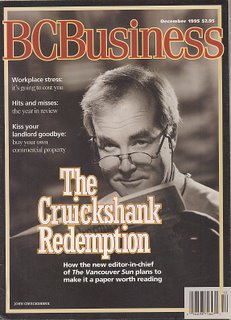
One day late in 1997 Cruickshank spotted me in the lobby and asked me to accompany him into his office. It was there that he revealed to me that he was going to have Beers "Mix" the rest of the paper and that he saw my photography as playing a part in it all. Soon after David Radler made one of the smartest decisions of his life in promoting Cruickshank and sending him to Chicago to the Sun Times where Cruickshank is now the publisher. Beers was left in an office with little to do and Mix soon lost its life force. I regret to this day Radler's smart move.
Susan Fiedler - A Face
Tuesday, April 24, 2007
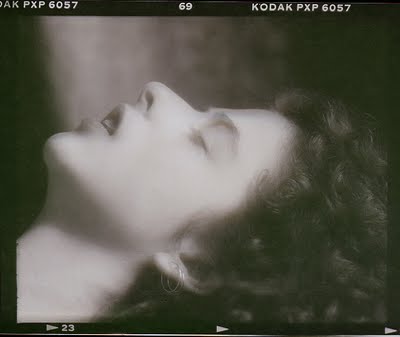 I am not quite sure when I photographed Susan Fiedler. I know I photographed her in my studio once and another time in Lynn Canyon. She designed jewelry. 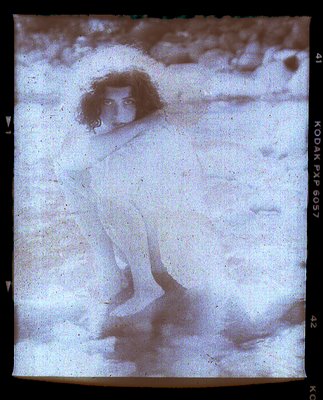 She had a face. She had a face that seemed to be from the 1920s or even from the previous century. 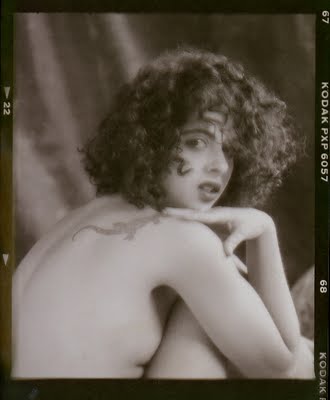 She didn't volunteer to smile for my pictures nor did I ever ask her to. She had a look of sadness and longing. It was a look of sensuality. 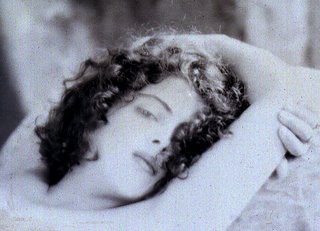 Lying on my studio psychiatric couch ( I purchased it for $100 from a retiring member of that profession) she posed languidly and at a certain moment she lowered the straps of her dress and said, "This is what you want, don't you?" Yes, I did.
The Cecil Hotel, One Yugoslavian & 9 English Bobbies
Monday, April 23, 2007
For oft, when on my couch I lie
In vacant or in pensive mood,
They flash upon that inward eye
Which is the bliss of solitude;
And then my heart with pleasure fills,
And dances with the daffodils.
William Wordsworth - I Wondered Lonely As a Cloud
The Cecil Hotel on Granville and Drake was an important location for my career as a magazine photographer in Vancouver. It was the spot of choice for long lunches for Vancouver Magazine editor Mac Parry who prononuced Cecil as sessle. It was here where Parry told me to go home and photograph my cat and make sure his whiskers were sharp. That issue of the magazine (March 82) featured an article on strippers by Les Wiseman. Wiseman and I, who at the time spent much too much time in strip parlours (he drinking beer and me dry pear cider), conned Parry into accepting an article on strippers by stressing its business angle. While we had photographs of our favourite dancers I also photographed the owners of the strip pubs. One of them was the melancholic Yugoslavian Sam Sorich who owned the Cecil Hotel. Of all the Vancouver bar owners Sorich was the one I liked best. He seemed to be honest and the dancers respected him.
A few years after the Vancouver Magazine article Sorich approached me with an idea. At the time the pub was decorated with a very large painted mural of 9 English Bobbies. I had not made the connection and perhaps the connection was only coincidental. Bobbies were also called Peelers after Sir Robert Peel who organized London's Metropolitan Police. Sorich wanted me to make a facsimile of the mural with 9 dancers dressed in Peeler uniforms. Unbelievable but true, Watt's Costumes had 9 complete unforms.
This task was a difficult one. The most trying part was getting 9 women who worked long evening shift to show up at the same place and at the same time. I chose as a shooting location a warehouse on Railway Street that had a painted white brick wall like the Cecil mural. My assistant wondered why I had set up a changing area with some large sheets that gave the dancers privacy. " They are strippers, aren't they?" Even I understood that every profession has its rules and code of ethics and that as human beings we all need privacy in context with the situation. The dancers were not working, they were posing for my camera.
And my camera was a rented Linhof 4x5 inch. Years before I had made up my mind that I never wanted to see the world upside down (as is the case with 4x5 bellows cameras) and that I would never use one. This occasion marked the first and last time I ever used one. I had to use it because the print that was put in the Cecil Hotel (I believe it still is there by the pool table) was huge.
I have kept track of some of my mural subjects and when we reminisce we always remember that onions were being stored in the warehouse and some were rotting. Except for that terrible smell we had fun and the world seemed to be less complicated.
 |
| Sam Sorich at the Cecil Hotel |
Could that sadness in Sam Sorich's face reflect that he knew it was the end of an era? The Cecil is much too loud now and the dancers are mechanical. Subtlety is long gone.
Rags, Flags & Citizenship
Sunday, April 22, 2007
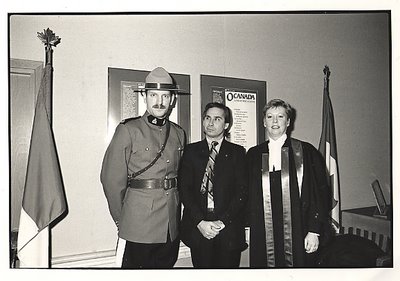 |
| Photo by Robert Blake |
Last night I attended a celebration in which my photography student Rona Tattersdill (a fine English woman in all respects ) became a Canadian citizen. Many of the guests where dressed in red and white and the cake was a Canadian flag. The happy and fun celebration made me think of my own when some 15 years ago I showed up at citizenship court with my father's King James Bible. By contrast it was more somber and even efficient.
---------------------------------------------------------------------------------------------------------------------------------
One of the most emotional moments of my life happened on June 20, 1965 in Parque Almirante Guillermo Brown (William Brown) in Buenos Aires. I was one of thousands of smartly dressed sailors in white swearing allegiance to our flag (jura a la bandera). Our flag was raised and we sang our national anthem. Rear Admiral Ricardo Sanchez Sañudo asked us, "¿Jurais..... if we would follow our flag at all times and defend her even with our life. In unison we answered, "We do!"
"¿Juráis a la Patria seguir constantemente su Bandera y defenderla hasta perder la vida? "
"Si Juramos!"
One year and 8 days later contingents of the Argentine army, navy and air force surrounded (I was one of them) the "Casa Rosada" and we gave our legally elected president Arturo Illía 60 minutes to leave the premises. This he did in a cab. The next day the military junta headed by General Juan Carlos Onganía had banned all political parties, closed congress and banned our constitution. After that coup I began to believe that the difference between the Argentine flag I had sworn to defend and any other flag from any other country was simply a colour dye. In essence, the flag I had cried for was a meaningless rag.
Politics in my return to Mexico did not change my perception specially when the Díaz Ordaz government brutally repressed a student uprising in Tlatelolco, prior to the the 1968 Olympics in Mexico.
But for years I clung to the concept of traveling with my blue leather Argentine passport even when the paper work to get one in Canada became very difficult. Upon my return to Buenos Aires around 1985 my consular passport was cancelled (by law) and I would have spent most of my two week stay in Buenos Aires lining up at the police station getting a new one. Through my half-brother who knew an ex police chief I obtained my passport in a day.
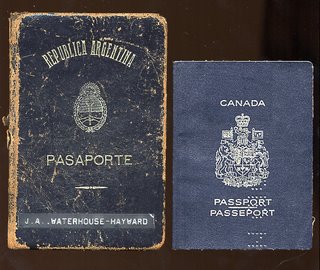
I will never forget what my half-brother Enrique told me, "Next time you come back to Argentina make sure you have a Canadian passport. My friend might not be around to help you." And so I applied for Canadian citizenship.
At the ceremony I was sitting next to a short Chinese man with black socks. I noticed that his first name was Aloysius. "Are you a priest I asked him?" He was. I showed him my father's King James bible on which I was gong to swear allegiance to the queen. He smiled as he showed me his Catholic bible and I felt close. We had a bond of sorts.
The event was recorded by my photographer friend Robert Blake (ex husband of Patricia Canning) who insisted that the event was an important one in my life. For me it was a practical procedure that would make traveling simple. But in the end Blake was right and I have come to realize how important it is to feel Canadian in a world of so many flags that more often than not are not up on a flag poles but stomped on by their would-be defenders. I have come to value our
Air
Space
& Water
I value our mostly unwavering 110 volts and precise 60 cycles. I value our more quiet form of "patriotism". It is fine with me if we are boring. The paradox is that in my new found Canadian identity my former Argentine one has flourished with less cynicism. Both live in me without conflict. Could that be the Canadian way?
And best of all I often spot Patrick Reid walking in Kerrisdale and while no tears come to my eyes the feeling that life is good in Canada is reinforced.
|




























